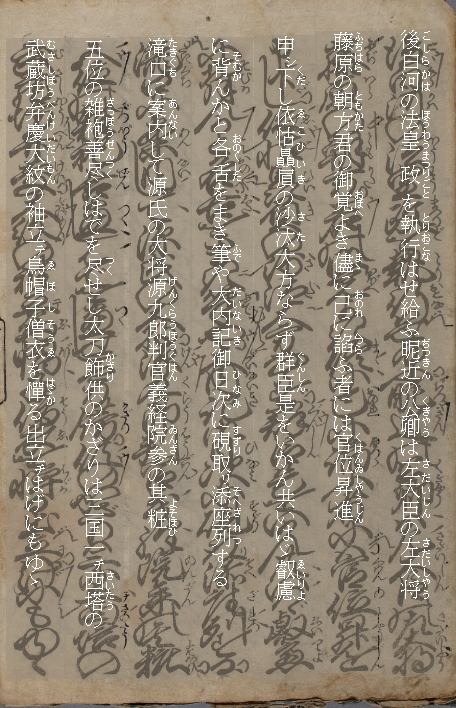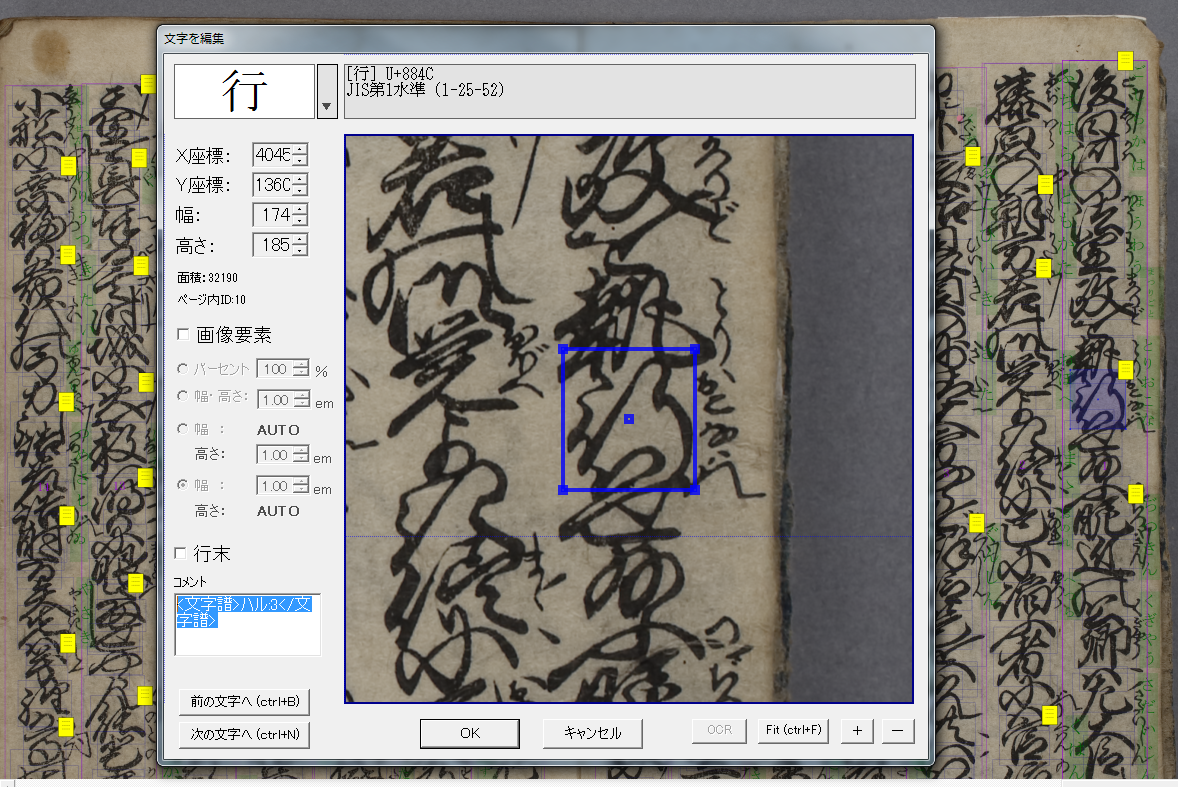Support Projects for Enhancing Function
Development of a Comprehensive Database of Pre-Modern Materials
using Kuzushiji Optical Character Recognition (OCR) Technology
Fiscal 2018
This project uses kuzushiji OCR technology to construct a new environment for researching pre-modern materials related to the theater (in particular, joruri maruhon and kabuki banzuke).
Our main achievement in 2018 was to build a multi-function database for both joruri maruhon(reciter’s book) and kabuki banzuke (program) materials by adding further data to the research results accumulated in prior years, thereby presenting one model for a comprehensive database of pre-modern materials.
Mojifu input screen
With regard to joruri maruhon (Kanadehon chushingura and Yoshitsune senbon zakura),in addition to previously created transcription data, we updated the viewer to also display information on ruby characters, suteji, and mojifu that indicate the melodies of joruri. Mojifu have proved consistently problematic when reissuing joruri maruhon, but this project allows them to be displayed within a web browser for the first time. With assistance from Mizuki Takusagawa (Chiba University), we investigated methods for storing mojifu data and displaying mojifuwithin a webbrowser–based viewer. In an attempt to achieve a modelthat will allow for searches benefitting future research on maruhon, we created a mojifu-specific database on Waseda University’s Cultural Resource Databases and linked it with the viewer on the center’s website.


Digital transcription display screen(Left: full text/ruby characters/sutegana, right: mojifu)
With regard to kabuki banzuke, we created new data for two kaomise banzuke and two yakuwari banzuke, as well as data for family crests and other aspects that had not previously been part of the database. In this sense, building an image database such as this is a truly modern way to make use of banzuke.
With help from an updated viewer that displays research results from prior years in a multilayered fashion, these data have been published online on the center’s website, taking advantage of the strengths of digital publication in a way that expands the possibilities of comprehensive databases. In addition, kuzushiji character data stored previously has been published on Waseda University’s Cultural Resource Databases, allowing them to be accessed in multiple ways.
In March 2019, as part of a panel discussion at the Gakugeki Gakkai society,“Kuzushiji and Digitization: The Theatre Museum's Kuzushiji Decipherment Support Study,”Takusagawa and Tomejiro Osawa (Toppan Printing Co, Ltd.) and research associate Shibata will report on the results of the research accomplished by this project. These talks are expected to draw great interest from expert researchers. Also, we are planning to create“Guidelines on Digitization of Kuzushiji”to summarize the three-year project, and also in March, we will release a basic guide for similar undertakings by foreign and domestic research facilities.
